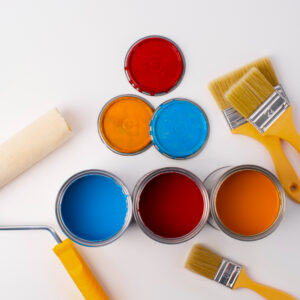Waxing remains a popular method for removing hair since it gets good results. Doing certain things before and after waxing helps you stay comfortable and avoid problems. You will find out in this guide how to treat your skin, relieve pain, and then follow aftercare to maintain its health. This care information can help you no matter the place or the method of your waxing.

You can use waxing to take out hair, which results in smooth skin that lasts for a long while. Real results can be seen when waxing is done on carefully smooth skin, with fewer chances of ingrown hairs and less hair growing back. Still, proper attention is needed before and after waxing. You should always get ready and handle your skin well to prevent unnecessary discomfort and help with the waxing results.
Understanding the Waxing Process
You apply a film of warm or cold wax to the body area with hair, and the hair sticks to it. Pulling it causes the hair to come out from its root. Many places, such as your legs, arms, underarms, bikini line, and face, can be helped by hair removal. While waxing gives results that last, you have to keep your skin healthy, or problems such as irritation or ingrown hairs could develop.
By waxing, you remove hair and also clean the first layer of your skin. When you skip the vital steps at the beginning and end of your treatment, your skin could encounter dangers. Skipping an effective skincare routine may result in different skin problems.
- Ingrown hairs
- Inflammation and swelling
- Skin infections
- Being dry and flaky
- Hyperpigmentation
Looking after your skin will support your skin and promote the same results after waxing.
Only two types of wax are available, which are soft wax and hard wax. Legs and arms can be waxed with soft wax that comes off easily, but if it’s the bikini line or face, you go for harder wax. Keeping your skin healthy by taking care of it long before and after waxing treatment helps avoid future problems.
Why Pre-Waxing Care Is Essential
It is important to take care of your skin in advance since it affects both the outcome and how much you enjoy waxing. Skincare before you shave will relieve discomfort, reduce your risk of ingrown hairs, and leave your skin smooth. Failing to prepare before a waxing service might result in itchiness, uneven patches, or burning your skin.
Choosing the Right Time for Waxing
When you decide to wax makes a difference in your expenses and your pain level. Postpone your waxing until after your period because your skin can be more sensitive at that time. A change in your hormones can make you feel less comfortable. Similarly, if your skin is not overheated, it will handle the waxing better, instead of reacting during the process.
- Are they on the medicine Accutane (Isotretinoin)
- Are your skin and eyes feeling irritated
- Do you have wounds, rashes, or infections that aren’t totally healed yet
- Experience oil allergy as a result of resins or waxes
If there’s any doubt, ask your dermatologist before removing hair with wax while having a skin condition.
Letting the Hair Grow to the Ideal Length
Be sure your hair is the right length before you start the process of waxing. In most cases, your hair is ready to trim when it measures about a quarter of an inch, which usually takes two to three weeks after your last hair removal procedure. If the strands are too short, wax won’t work well, and if they are too long, it might hurt more and cause some to break rather than come out.
Gentle Exfoliation Before Your Appointment
You should exfoliate your skin the day before you decide to wax. It gets rid of dead cells, unblocks hair follicles, and makes gripping the hair easier. Exfoliating gently by hand or with a special mitt can help your waxing and make ingrown hairs less likely. On the day of your appointment, skip exfoliation since fresh exfoliated skin could get irritated.
Stay Hydrated and Moisturized
Try to drink as much water as you need to keep your body hydrated. When your skin is well hydrated, it is simpler to remove any hair.
Wear Loose Clothing
Clothes that are too tight can rub the skin, which might lead to irritation or pimples. Put on clothes made from light cotton materials.
Take a Pain Reliever (Optional)
You can try taking ibuprofen or acetaminophen around 30 minutes to an hour ahead of your appointment to make the sensitive locations more comfortable.
Avoid Caffeine and Alcohol
The use of these products can increase the chance of your skin turning red or getting irritated.
Avoiding Moisturizers and Oils on Wax Day
The day you get waxed, just skip the lotions, creams, and oils on your skin. They can put up a barrier that avoids the wax from connecting effectively with the hair. Having clean and dry skin gives your waxing session a better outcome and lessens the chance of missing any hair.
Hydration and Diet: Subtle Influences on Waxing Results
Practicing good hydration leading up to your appointment will make sure that your skin does not pull when waxed. When you drink enough water, your skin’s barrier is protected, and it recovers faster after waxing. Some people note that not consuming caffeine or alcohol a while before a session can reduce skin sensitivity.
Immediate Aftercare: First 24 Hours Are Crucial
You should be most careful about your skin the day after you get waxed. Redness, bumps on the skin, and slight discomfort are all expected after removing hair by the root. You should try not to sweat, overheat, or rub your skin during this period since it can cause pores to get clogged or cause irritation.
It’s best to skip hot showers, saunas, time spent in indoor pools, and exercise when you are ill. The open pores are easily filled by bacteria carried by sweat, which may result in infection or ingrown hairs. Resting your skin is helpful since it reduces inflammation and enables your hair follicles to close on their own.
Post-Wax Cleansing and Cooling Techniques
Go for a toner or a diluted antiseptic agent after getting out of the salon to avoid infections. Redness can be reduced and skin soothed by applying cold compresses that have aloe vera or tea tree oil. Also, anti-inflammatory and antibacterial properties in these ingredients promote a quicker recovery.
Long-Term Skincare After Waxing
Waxing is a process that lasts after the session. Taking care of your skin over the long run helps keep it even and avoids trapped hair within your hair follicles. Wipe the waxed areas with a gentle scrub two or three times every week, once the first two days are over. In this way, the skin stays soft and hair is unable to build up and grow when new hairs start appearing.
Applying a gentle body lotion every day will keep your skin moisturized and stop it from getting dry or flaky. In places where ingrown hairs are common, serums or treatments with salicylic acid or glycolic acid can be put on to clean the pores and reduce inflammation.
Dealing with Ingrown Hairs and Bumps
Even if you look after your skin well, you can get an ingrown hair every once in a while. Your hair is pulled back towards your head instead of growing up off the surface. Sometimes, ingrown hairs make skin uncomfortable and even start itching, and they rarely look nice. Make a warm compress and carefully rub your skin using it to shave the hair. Avoid poking or squeezing pimples, since this could harm your skin.
If you continue to experience ingrown hairs, applying products that help prevent their development may be beneficial. Witch hazel, tea tree oil, and alpha-hydroxy acids are ingredients that can slow the increase of dead skin cells and help fight inflammation.
Timing Your Next Waxing Session
Think about your natural hair growth and schedule the next waxing when it is most useful for you. Most people think four to six weeks is the best time frame. Eventually, if you keep waxing regularly, hair tends to come back thinner and less often, which makes it less painful.
Resist waxing too much, as this may make the skin uncomfortable and remove hair before it has fully developed. Keeping a watch on how your hair changes between sessions will allow you to decide when your next appointment should be.
Home Waxing vs. Professional Waxing: Making the Right Choice
At-home waxing kits are both easy on the pocket and accessible, but they need you to pay attention and take your time. It might be difficult for new users to achieve professional results in locations that are hard to see or when dealing with tough hair. Waxing done by a professional can give better results, clean conditions, and often extra comfort for people concerned about their skin.
Pros and Cons
Home Waxing
Pros:
- Budget-friendly
- Convenient
Cons:
- Higher risk of burns or bruising
- May miss hair or cause breakage
- Not suitable for all body areas
Professional Waxing
Pros:
- Experienced estheticians
- Better hygiene and technique
- Ideal for sensitive areas
Cons:
- Costlier than DIY
- Requires appointment scheduling
Salons are less likely to cause infections or injuries because they are well-equipped and use the best quality products. For your first time, it might be a good idea to use a professional because you’ll feel more prepared and confident each time after.
Waxing Myths and Misconceptions
A lot of people think that waxing causes faster or thicker hair to return, but that isn’t actually true. In the long run, folks may notice that repeated waxing makes the hair follicles weaker and causes the hairs to grow back more finely. People sometimes think that waxing is only meant for women. These days, more and more men are choosing to have their chest, back, and eyebrows waxed, which clearly reveals that anyone can appreciate smooth skin.
People may also think that waxing is a very painful process. Even though skin prep and the process itself can be a bit uncomfortable, handling the skin with the right technique will help. Selecting the right wax and regularly treating your skin lessens your pain with time.
Seasonal Considerations for Waxing
Your waxing plan may need to change depending on the seasons. Waxing your skin means you need to use sunscreen while you’re out in the sun during summer. Waxed skin should be protected from direct sunlight since it is more at risk from the sun’s rays. As winter air tends to dry out the skin, you should keep applying moisturizer after every shave.
Make sure your waxing schedule is set in advance so you can look smooth during holidays, summer trips to the beach, or other events. It is better to get your final waxing done a couple of days before the big event to avoid inflammation and maintain smoothness.
Waxing and Skin Types: Adapting Your Routine
People’s skin may react differently to waxing depending on their skin type. Those who have oily skin are likely to develop pimples after getting waxed in certain areas. People who have dry skin may notice flaky patches and feel discomfort for a long time. Depending on your skin type, select the perfect routine for after waxing and follow it.
People with oily skin must pick products that are mild and don’t clog their pores. Balms or creams that have either shea butter or hyaluronic acid are a good choice for anyone with dry skin. Products with a pleasant smell and that are made for sensitive skin should be used to prevent problems.
Before and After Waxing Tips
Facial Waxing
Tips Before Waxing
- Wait up to 5 days after using acids or acne treatments before you are waxed.
- You should never cover up active skin problems and sores with products.
Aftercare
- Massage calming cream or aloe vera on the damaged area.
- Spend at least 12–24 hours without makeup on your skin.
- SPF should be used on a regular basis to avoid patches of colored skin.
Bikini and Brazilian Waxing
Before
- Don’t engage in intense activity that can work you up just before you begin the session.
- Cut hair so that it’s the right length if you find it too long.
After
- Clean the area with antibacterial wipes or with gentle feminine soap and water.
- Cotton is a good material for your underwear.
- Avoid pools, ocean water for 24 hours.
Underarm Waxing
Before
- Don’t use any deodorant just before your waxing session.
- Cleanse thoroughly.
After
- Do not apply deodorant for just one day.
- If you require protection from wetness, use talcum powder.
- You may want to switch to a natural deodorant on the first day.
Leg and Arm Waxing
Before
- Do not wax your skin when there is still hair growing back after the last wax. It stops the process of development.
- If you want to use self-tanner, you should exfoliate 1–2 days prior.
After
- Take care to both moisturize and exfoliate regularly.
- It’s best to wear something loose and wide after the exercise.
When to Wax Again?
Understanding Hair Growth Cycles
It takes three stages for hair to grow: anagen, catagen, and telogen. Waxing is done best when the hair is in its anagen phase.
General guideline:
- Face: 2–3 times every month
- The underarm area should be shaved every two weeks
- Bikini is intended for use after every 3–4 weeks
- Every 4–6 weeks, train your legs and arms
Sticking to a routine improves how results turn out in the long run.
Trust This Guide Backed by Experience
This guide draws from the experience of licensed estheticians, dermatologists, and industry specialists who know about skin care and removing hair.
All the products and routines suggested are approved by experts and based on genuine scientific data. People having their first session and those who are skilled at waxing will discover these tips to be supportive, safe, and effective.
Conclusion
Waxing helps improve the skin, and it’s not just limited to grooming. Both paying attention to preparation and recovery will help you get smoother and healthier skin. When you get waxed, you gradually refresh and smooth your skin, which stays soft, glowing, and hair-free for a few weeks.
By starting to wax regularly, you turn it from a chore to a step in self-care. Waxing becomes more enjoyable and rewarding when you handle it with a positive mind and the proper knowledge.






